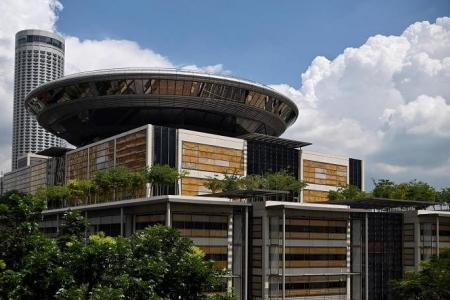Woman who bought $18.68m GCB loses lawsuit against property agency over seller’s brochure
A newly engaged woman who bought an $18.68 million Good Class Bungalow (GCB) sued her real estate agency, alleging that its agent had falsely represented to her that the entire land area of 12,454 sq ft could be fully redeveloped.
After paying $934,000 for the right to buy the property, Ms Jane Lam and her father discovered there was a drainage reserve of 278.8 sq ft on the property that could not be used for redevelopment.
Ms Lam’s father, Mr Patrick Lam, is the founder of boutique property developer JBE Holdings.
In her lawsuit against the agency, Realstar Premier Group, Ms Lam contended the agent should be held responsible for passing on a marketing brochure from the seller that she claimed had painted a false picture of the property’s redevelopment potential.
She claimed that she suffered losses amounting to $418,160.76, which was derived by using the purchase price divided by the proportion of the area of the property that could not be used for redevelopment.
The High Court dismissed her negligent misrepresentation suit on Dec 5, saying that any false impression that the entire land area could be redeveloped was a “misimpression on her part”.
In her written judgment, Senior Judge Lai Siu Chiu added that in the present case, the property agent’s role was limited to that of a conduit in passing the brochure to her.
The agent’s standard of care did not require him to independently verify the contents of the brochure, said Justice Lai.
The agent, Mr Darren Teo, first got to know Mr Lam in July 2021.
On Dec 14, 2021, Mr Teo told Mr Lam that the property on Lewis Road, off Bukit Timah Road, was for sale for the negotiable price of $21 million.
The next day, both Ms Lam and Mr Lam met Mr Teo to view the external compound of the property; they were not allowed access to the house.
The seller’s property agent, Mr Gregory Tan, was also present.
Mr Teo sent Mr Lam a link to access the soft copy of a brochure comprising a site plan, a map, photographs of the external compound, and a page depicting three potential layouts when the property is redeveloped.
The Lams claimed that he had also shown them a hard copy, but Mr Teo disputed this.
Ms Lam offered $18.68 million for the property, and paid $186,800 for an option to purchase it. The offer was accepted by the seller on the same day.
On Dec 29, 2021, Ms Lam paid $747,200 to exercise the option to purchase
On Jan 7, 2022, the Lams discovered via an e-mail from their lawyers that there was a drainage reserve of 25.9 sq m, or 278.8 sq ft, on the property.
After checking with their architect, the Lams learnt that the drainage reserve could not be used in any redevelopment.
On Jan 13, 2022, the Lams were allowed inside the house and saw the drainage reserve for the first time.
In her suit, Ms Lam alleged that Mr Teo had made false representations – via the brochure – that the entire land area could be fully redeveloped, as no drainage reserve was indicated on the layouts.
She asserted that Mr Teo had breached his duty of care as a property agent to ensure that the facts affecting the value of the property were represented accurately and truthfully to her, and that Realstar is vicariously liable for his breach.
But Realstar contended that the brochure does not contain the alleged misrepresentation. The agency argued that even if there was misrepresentation, such representation was made by the seller or the seller’s agent.
In her judgment, Justice Lai disagreed with Ms Lam’s argument that the brochure implied the entire 12,454 sq ft of the property could be used for redevelopment.
The judge considered that Mr Teo had no knowledge of any drainage reserve.
It appeared that even Mr Tan, who had prepared the brochure, was unaware of the drainage reserve, said Justice Lai.
The judge also considered that Mr Teo had simply been asked by Mr Tan to pass on the soft copy of the brochure, and this was done in the presence of the Lams.
She further considered that with their experience in the real estate industry, the Lams would have known that redevelopment layouts are subject to change.
The judge added that a reasonable person in Ms Lam’s position would not have believed that depictions of potential layouts implied that the entire land area will be available for redevelopment.
Get The New Paper on your phone with the free TNP app. Download from the Apple App Store or Google Play Store now


